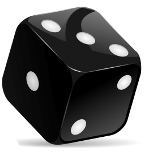Rounding Decimals
Rounding to 2 decimal places is common in mathematics, particularly when working with dollars and cents.
Example One - Rounding to One Decimal Place
Look at the digit in the 2nd decimal place. If that digit is 5 or greater, the digit in the 1st decimal place changes up to the next digit. If not, the digit in the 1st decimal place remains unchanged.
1.31 becomes 1.3
1.35 becomes 1.4
31.72 becomes 31.7
31.79 becomes 31.8
Example Two - Rounding to Two Decimal Places
Look at the digit in the 3rd decimal place. If that digit is 5 or greater, the digit in the 2nd decimal place changes up to the next digit. If not, the digit in the 2nd decimal place remains unchanged.
1.324 becomes 1.32
1.328 becomes 1.33
31.724 becomes 31.72
31.728 becomes 31.73
Important!
Because money transactions are commonly performed online using credit cards and the like, banks do not round cents to the nearest 5 cents as is done with cash. All school money calculations should be rounded to the nearest cent, that is, rounded to 2 decimal places.
Round these numbers to 1 decimal place.
Q1. 123.64
Q2. 123.78
Round these numbers to 2 decimal places.
Q3. 123.647
Q4. 123.7823
Answers
A1. 123.6
A2. 123.8
A3. 123.65
A4. 123.78
Maths Fun - π (to Ten Decimal Places)
The Greek letter "Pi" is very special number. When ∏ is multiplied by the diameter of a circle, the answer is the circumference (the distance around the circle). ∏ is approximately equal to 22/7. Work this out to 10 decimal places.
Did You Know That...?
Breaking athletics records also breaks the rules about how to round decimals. In Olympic track and field competitions, running times are measured in milliseconds (to 3 decimal places). However, race records are recorded to 1 decimal place. To be fair, all race times are rounded UP to 1 decimal place. Rounding some down and some up would give some athletes an unfair advantage.

| 
| 
|